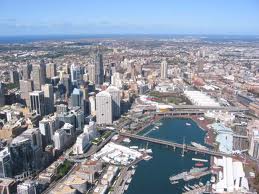A City of Sydney proposal to double down on local government sustainability and climate targets has been unanimously supported by council, adding stronger environmental targets and greater support for technology and digital infrastructure to the city’s already ambitious plan.
First adopted in 2008, the Sustainable Sydney 2030 action plan will now be updated by council with a reinforced commitment to net zero emissions by 2050, sourcing half of its energy from renewables by 2030 and zero increase in water usage.
The refresh of the document also confirms the City’s alignment with the 100 Resilient Cities initiative and the United Nation’s Sustainable Development Goals.
News of the council’s climate action upgrade coincides with the release of a UNSW report that estimated that the state’s capital city was using only 1 per cent of its rooftop solar potential and missing out on upwards of $70 million a year in energy cost savings.
By the study’s most conservative estimations, Sydney’s CBD holds around 393MW of untapped PV potential – or 507GWh a year – with around 25 per cent of its rooftops both suited for and able to accommodate solar panels.
A less conservative estimate, indicated that an area equal to 40 per cent of the available roof surfaces could be used to accommodate PV, corresponding to 619MW of potential PV capacity with an expected annual yield of 777GWh – or around 22 per cent of the load in the CBD.
The City of Sydney, by contrast, is currently meeting around 14 per cent of its electricity demand with renewables, on a path to 50 per cent by 2030. Recently, it made a second attempt to convince Australia’s energy rule maker to encourage decentralised energy – such as solar and battery storage – by removing some of the market barriers and making the rules fairer.
The update of Sustainable Sydney 2030 follows the release, last June, of the Environmental Action 2016–2021 plan, which aimed boost the City’s targets by factoring in advances in renewables technology and the global climate commitments made in Paris last December.
As we reported at the time, the City was reportedly considering replicating a City of Melbourne scheme in which the council, businesses and residents have grouped together to sponsor large-scale renewable energy projects.
The five-year plan committed to shorter-term targets in energy, water, climate adaptation, waste, transport and “greening”, based on a range of goals set for between now and 2021, and included plans to incentivise Sydney’s first net zero emissions buildings; develop an energy retrofit program for residential apartment buildings; give a $10 million boost to local renewable energy development; engineer a waste to energy strategy for the city and foster recycled water schemes.
Sydney Lord Mayor Clover Moore said on Tuesday that overall, the City’s climate action plans had been a “tremendous success”.
“Since 2006, our economy has grown 32 per cent, new dwellings 18 per cent and the number of residents by 25 per cent. Over the same period, we’ve cut a quarter of our carbon emissions and across our local government area we’ve reduced emissions by 17 per cent.
Moore said the City would also continue to work with the private sector to deliver smart digital infrastructure to deliver our Sustainable Sydney 2030 targets.
Of course, Sydney is not alone in setting a high “sub-national” government bar for climate action and renewables. The City of Melbourne has a renewable energy target of 25 per cent by 2018 and, as mentioned above, has led a consortium of local government and business in the development of a large-scale renewable energy plant.
The City of Adelaide is also targeting net zero emissions by 2050, and aims to achieve $10 billion in low carbon investment by 2025 and to improve energy efficiency of government buildings by 30 per cent by 2020.
And the ACT leads the push to renewables, with a commitment to source the equivalent of 100 per cent of its electricity needs from renewable energy by 2020.
Indeed, according to research by Beyond Zero Emissions, published in June 2016, nearly one in five Australian communities and councils have set zero emissions or 100 per cent renewable energy targets.







